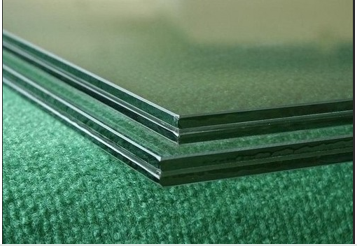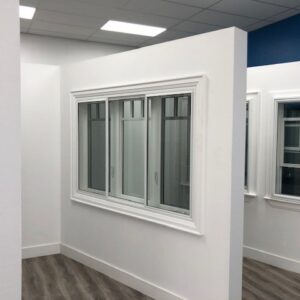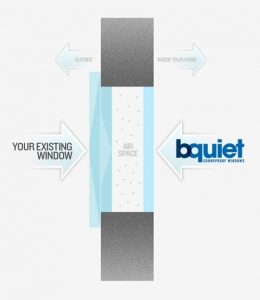Acoustical Laminated Glass
Description
Acoustic laminated glass offers improved levels of noise reduction over regular glass. To achieve this, several methods are employed.
- The panes of glass used can be glazed, essentially combining double glazed and laminated glass. Since each of these types of glass is already highly rated for blocking noise, when combined, the effect is increased. By double glazing the laminated glass, you also give the glass better insulation properties.
- Air space may also be left to maximize sound blocking characteristics. This space gives the sound waves room to deplete their energy inside of the windowpane. This will result in an even better reduction of noise coming through the glass. Air spaces of 3.25” to 6” are recommended for best results.
- Additionally, the pieces of glass used, the laminate between, or both could all be increased in thickness. By adding more material and making the final product thicker, you can block out more of the sound waves, resulting in decreased noise transmission.
With acoustic laminated glass, STC ratings of over 50 have been achieved. Glass with ratings this high is custom ordered and generally found only in very high-end professional recording studios.
Acoustic Properties of Laminated Glass
In laminated glass, it is the adhesive layer in the middle that does a majority of the noise reduction. By increasing the size of this layer, better noise reduction can be achieved. Laminated acoustic glass is a great way to help reduce noise transmission and can achieve 50 to 90% reductions.
Benefits of Laminated Glass
Laminated glass possesses a whole host of benefits. Some of the most noteworthy are:
- Very high strength means it is impact resistant.
- Safety glass: doesn’t shatter when broken.
- Excellent noise reduction characteristics.
- Blocks 99% of UV light which can help stop carpets and upholstery from fading.
Acoustical Laminated Glass Applications?
There are many applications for Acoustical Laminated Glass. The Windows and Doors we offer have the benefit of this glass.
Other applications include:
- Commercial Boardrooms:
- Most boardrooms like to utilize the look of glass. If the design is just under way, consider utilizing Acoustic Glass over standard for a superior sound barrier.
- If the glass is existing consider replacing it, but keep in mind that the existing frame may not allow for thicker glass inserts.
- Add a secondary layer of glass to the inside of the Boardroom with an airspace. Most times the glass can be incorporated into the design so it provides a pleasing aesthetic look.
- Balconies:
- Enclose your balcony with Acoustic Glass or replace the existing Glass railing. It won’t completely remove the outside noise, but will assist in providing a space that is comfortable to talk. Height and connections will be determined by Building codes and Strata
- Storm Windows:
- Add a framed piece of Laminated glass to your window. Although the windows are best suited for indoor use an exterior storm window will not only provide added security but also give you sound reduction. The more airspace that can be provided, the better the sound reduction.
- If you have a window that does not need to open, utilize Acoustical Laminated Glass on the inside of your window for best results. Glass can be trimmed and painted to match your existing window.
Only logged in customers who have purchased this product may leave a review.




Reviews
There are no reviews yet.